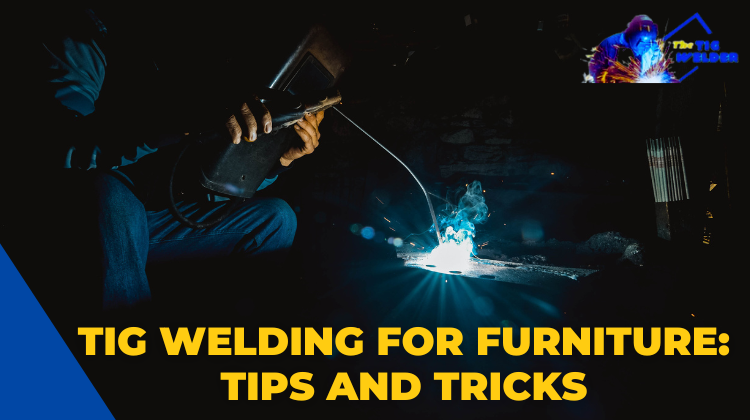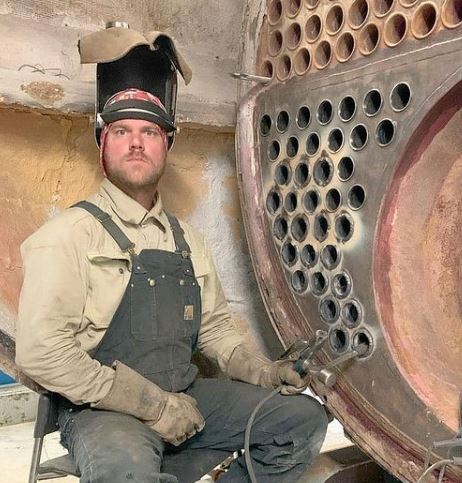Tig welding is an important process in creating furniture for several reasons. Firstly, tig welding allows for precise and high-quality welds that are strong and durable. This is important in the furniture industry as the welds must withstand daily use’s weight and wear and tear. Secondly, tig welding allows for a wide range of design options as it can be used on various materials, including steel, aluminum, and other alloys.
This versatility allows furniture designers and manufacturers to create unique and visually appealing pieces. Lastly, tig welding is a clean and efficient process that produces minimal fumes and spatter, making it suitable for indoor environments. Overall, tig welding is an essential tool for those working in the furniture industry as it allows for the creation of strong, durable, and visually appealing pieces.

Tig Welding for Furniture
To get the best results when tig welding furniture, it is important to follow some tips and tricks to ensure the welds are strong and meet industry standards.
Equipment Needed For Tig Welding Furniture
To get started with tig welding furniture, you will need a tig welder, tungsten electrodes, welding wire, a gas cylinder, and protective gear. The tig welder is the main piece of equipment and can be purchased or rented from a welding supply store. Tungsten electrodes come in different sizes and types, and the right one should be chosen based on the material being welded and the desired result. Welding wire is used to fill the weld joint, and the type and size should be selected based on the welded material. A gas cylinder is used to shield the weld from the atmosphere, and the type of gas used depends on the material being welded and the desired result. Protective gear is important to prevent burns and eye injuries and should include a welding helmet, gloves, and protective clothing.
Preparing The Materials
Before starting a tig welding project, it is important to properly prepare the materials. This includes cleaning and preparing the metal surfaces by removing dirt, rust, or paint. Any imperfections or irregularities on the metal surface can affect the quality of the weld, so it is important to ensure that the surfaces are as smooth as possible. Choosing the right tungsten electrode size and type is also important. The electrode size should be based on the thickness of the welded material, and the electrode type should match the material and the desired result. The appropriate filler wire is also important and should be chosen based on the welded material and the desired result.
Welding Techniques For Furniture
Tig welding creates an arc between the tungsten electrode and the welded material. The welder parameters, such as the current and gas flow, should be set based on the material being welded and the desired result. Starting and stopping the weld bead is an important technique to master in tig welding. It is important to start and stop the weld bead in a controlled manner to avoid defects such as porosity or undercutting. Making smooth, even welds is also important for a high-quality result. This can be achieved by maintaining a consistent arc length and using proper technique. Common mistakes to avoid include porosity caused by gas bubbles in the weld and undercutting caused by excessive heat, which can weaken the weld joint.
Finishing And Polishing The Welds
Once the welding is complete, the welds should be finished and polished for a professional appearance. This can be achieved by grinding and sanding the welds to remove imperfections and achieve a smooth surface. A finish can then be applied to protect the metal and improve its appearance. Many types of finishes are available, including paint, powder coating, and patina. The type of finish chosen should be based on the desired result and the material being welded.
Safety Tips For Tig Welding Furniture
Tig welding can be dangerous if proper safety precautions are not followed. It is important to wear protective gear, including a welding helmet, gloves, and protective clothing, to prevent burns and eye injuries. The workspace should also be set up properly to ensure it is safe and free of hazards. Proper welding techniques should also be followed to avoid injuries and ensure the quality of the weld.
Do You Hold Tig Torch With Dominant Hand?
In general, holding the TIG (inert tungsten gas) torch with the dominant hand is recommended to have the most control and precision when welding. The dominant hand is typically the hand that is most comfortable and natural for fine motor skills, and it can be more efficient to use this hand to hold the torch. However, some welders may find it more comfortable to hold the torch with their non-dominant hand, and it is ultimately a matter of personal preference.
How Do You Touch Start Tig?
The touch start method initiates the TIG (inert tungsten gas) arc by lightly touching the tungsten electrode to the workpiece. To touch start TIG, the welder should first set the welding machine to the desired welding current and then prepare the workpiece and tungsten electrode. The welder should lightly touch the tungsten electrode to the workpiece and adjust the arc length as needed. The welder should lift the tungsten electrode slightly off the workpiece to initiate the arc. The touch start method can be a simple and effective way to initiate the TIG arc, but it can also cause contamination of the tungsten electrode and the workpiece.
What Is The First Thing To Do Before Setting Up Tig Welding?
Before setting up TIG (inert tungsten gas) welding, it is important to follow all safety protocols and guidelines to ensure the welder’s safety and anyone in the immediate area. This may include wearing appropriate personal protective equipment (PPE) such as a welding helmet, gloves, and protective clothing and ensuring that the work area is properly ventilated. It is also important to read and follow the manufacturer’s instructions for the welding equipment and to carefully inspect the equipment for any damage or defects before use.
What Are The Important Steps To Do When Tig Welding?
- There are several important steps to follow when TIG (inert tungsten gas) welding to produce high-quality welds and to ensure the safety of the welder:
- Set up the welding machine and equipment according to the manufacturer’s instructions and safety guidelines.
- Select the appropriate welding parameters, including the welding current, voltage, and shielding gas flow rate.
- Prepare the workpiece and tungsten electrode by cleaning them and ensuring they are free of contaminants or defects.
- Initiate the TIG arc using the desired method (e.g., scratch start, high-frequency start, lift start).
- Maintain a consistent arc length and filler metal addition rate to produce a smooth, uniform weld bead.
- Monitor the welding progress and make necessary adjustments to the welding parameters to ensure the best possible weld quality.
- Finish the weld by properly terminating the arc and removing any slag or excess filler metal.
Conclusion
Tig welding is a valuable skill for furniture makers, as it allows for precise, high-quality welds that can enhance the appearance and strength of furniture pieces. You can achieve professional-grade results in your furniture projects by following proper equipment selection, material preparation, welding techniques, and safety precautions. With practice and attention to detail, you can master the art of tig welding and take your furniture making to the next level.

It’s been years since I got into welding as a side hustle. It’s been so long since Doing All kinds of welds for business and pleasure as this is my hobby. Being in this field I have learned from hands-on-experience also came to know what gears work and what doesn’t. The Tig Welder is my own platform where I use to share my experience.






Leave a Reply